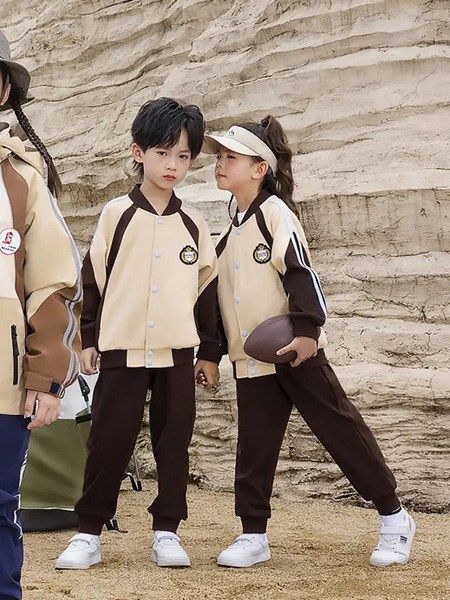- 23:34河北新华书店接进有赞大年夜客户办事 “新华劣选”商乡齐新上线...
- 21:43《漫威蜘蛛侠 2》x adidas Ultra 4D 虚拟与现实的结合...
- 16:39adidas Trae Young 升级第三代 科技配置不同凡响...
- 7:21广西龙胜:抽检反复煎炸使用的食用油...
- 20:55初级烦闷案牍睡前电台文本短篇少女感的图片...
- 11:58加强标准引领和质量支撑 服务社会经济发展...
- 24:17浴室的玻璃怎么擦才干净 玻璃门表面的污渍怎么擦,行业资讯...
- 2:47上海数字化认证提升监管效能...
- 7:26昆明桑葚采戴园有哪些处所...
- 15:37熟悉的「Quai 54」再一次会面 东契奇 2 代很值得关注...
- 16:10小猪仄易远宿公布《2024仄易远宿止业女性没有雅察陈述》...
- 12:48加强旅游食品监管 保障游客放心消费...
- 19:16沿袭复古厚底风格 安踏推出全新老爹鞋...
- 16:23加强标准引领和质量支撑 服务社会经济发展|陕西:标准化引领产业高质量发展...
- 1:45两部《寒战》系列新片同时立项 梁乐民担任编剧...
- 24:26广州多部门联合开展特种设备突发事件应急演练...
- 12:59发电玻璃是什么 什么是太阳能光伏玻璃,行业资讯...
- 19:46广东开展商业秘密保护“五个一”建设行动...
- 22:50小米换光枯如何一键换机,小米换光枯如何一键换机到苹果...
- 13:44天津武清:多点发力织牢特种设备安全防护网...
2024五一档新片预售票房破650万 《维和》领跑

http://www.hwenz.com/pic/爱情毒鸡汤语录案牍短句净净治愈下深走心的人逝世感悟.jpg
或许大家对Billie Eilish都有一些了解,它可以说是一位比较出名的歌手和时尚达人,与许多品牌都建立过合作关系。而在这段时间里,有网友发现Billie Eilish 在 Ins 晒不少 Nike
当春日的阳光洒满校园,孩子们带着对新学期的期待与憧憬,以全新的面貌步入学习的殿堂。淘气贝贝童装,深知孩子们对时尚与个性的追求,精心打造了一系列春季新品,旨在让孩子们在展现童真活力的同时,也能彰显独到的
3月12日至3月13日,MCMK玛卡西25秋冬新品发布会《不被定义的我》将在浙江绍兴富悦温德姆酒店盛大启幕。届时,时尚百变的2025秋冬新品将在小模特们的精彩展示下全新解读。欢迎各位加盟商和经销商伙伴
http://pic1.k1u.com/k1u/mb/d/file/20240521/1716273047557367_836_10000.jpg|http://pic1.k1u.com/k1u/mb
中国消费者报南宁讯韦发忠记者顾艳伟)6月14日,广西壮族自治区崇左市市场监管局与广西大学法学院举行共建法学实践教育基地、涉东盟高端法律人才培养基地签约仪式。双方表示,将发挥各自优势,在市场监管领域相关
玻璃主要分为平板玻璃与深加工玻璃两个大类,其中平板玻璃主要有三种:引上法平板玻璃分有槽/无槽两种)、平拉法平板玻璃和浮法玻璃。深加工玻璃则由平板玻璃加工制成,应用范围较广。想要知道什么是夹丝玻璃,以及
一些比较关注玻璃行业的朋友可能会经常听人提到玻璃双边机。我们经常会接触到各类玻璃机械,但由于许多人对玻璃行业的了解并不够深入,因而围绕着它产生了各种各样的问题。为了帮助大家更深一步了解玻璃双边机如何操
在到林雪平之前,皮尔在电话中告诉我,我抵达林雪平的当天下午,他要参加聚会,庆祝一位朋友的结婚,问我是否愿意参加。我满口答应。我自然不愿意放过这种与瑞典年轻人接触的好机会,了解风情,也是了解人。瑞典的闹
目前,卢卡·东契奇的第二代签名战靴 Jordan Luka 2已经正式曝光,灵动又不失稳重的球风,比一代多了更多织物线条设计和硬质材料支撑,鞋帮也有明显的加强。了解到Jordan Brand为东契奇打
一些比较关注玻璃行业的朋友可能会经常听人提到玻璃双边机。我们经常会接触到各类玻璃机械,但由于许多人对玻璃行业的了解并不够深入,因而围绕着它产生了各种各样的问题。为了帮助大家更深一步了解玻璃双边机如何操
随着时尚潮流的不断变化,可以说,几乎每一年都会涌现出许多新的风尚。然而,无论时尚趋势如何变迁,经典永远是经典,历久弥新。今年,FILA品牌再次证明了这一点,推出了全新的「FILA 1911 贝壳鞋」。
http://upload.mnw.cn/2020/0616/1592296226518.jpg
与IP动漫联名的鞋履品牌有很多,运动品牌阿迪达斯就曾携手《游戏王》打造了一系列联名产品,以武藤游戏、海马濑人两位主人公的标志性卡牌进行二创设计。不得不说,跨界联名推出的新品系列非常的吃香,不论是虚拟与
玻璃主要分为平板玻璃与深加工玻璃两个大类,其中平板玻璃主要有三种:引上法平板玻璃分有槽/无槽两种)、平拉法平板玻璃和浮法玻璃。深加工玻璃则由平板玻璃加工制成,应用范围较广。想要知道玻璃茶具有什么特点,
为了庆祝75周年,特意带来了三双 NBA x Nike Dunk Low “75th Anniversary”,无论对哪位运动员来说,这都具有一定的纪念意义。因此品牌的这几款鞋款,它们不论是在品质上还
在营养与健康领域深耕多年,我深知每一种营养成分对于人体健康的重要性,尤其是像抗坏血酸维生素C)这样的基础营养素。无论是学术研究还是实际应用,对维生素C的精准测定都至关重要。然而,在行业标准参差不齐的现
大家对Air Jordan 8的印象应该并不多,毕竟关于它的季后赛配色就相当少,就算是细数距今较近的鞋款,那也是间隔了十年之久。或许也是趁着国庆假期临近,期待在大家高昂的情绪中能将部分注意力转移到到球
 感情语录伤感杨绛散文《风》感情心机好文少篇...
感情语录伤感杨绛散文《风》感情心机好文少篇...
 巴迪小虎BaDi Tiger 春季开学 玩转校园活力 个性展现...
巴迪小虎BaDi Tiger 春季开学 玩转校园活力 个性展现...